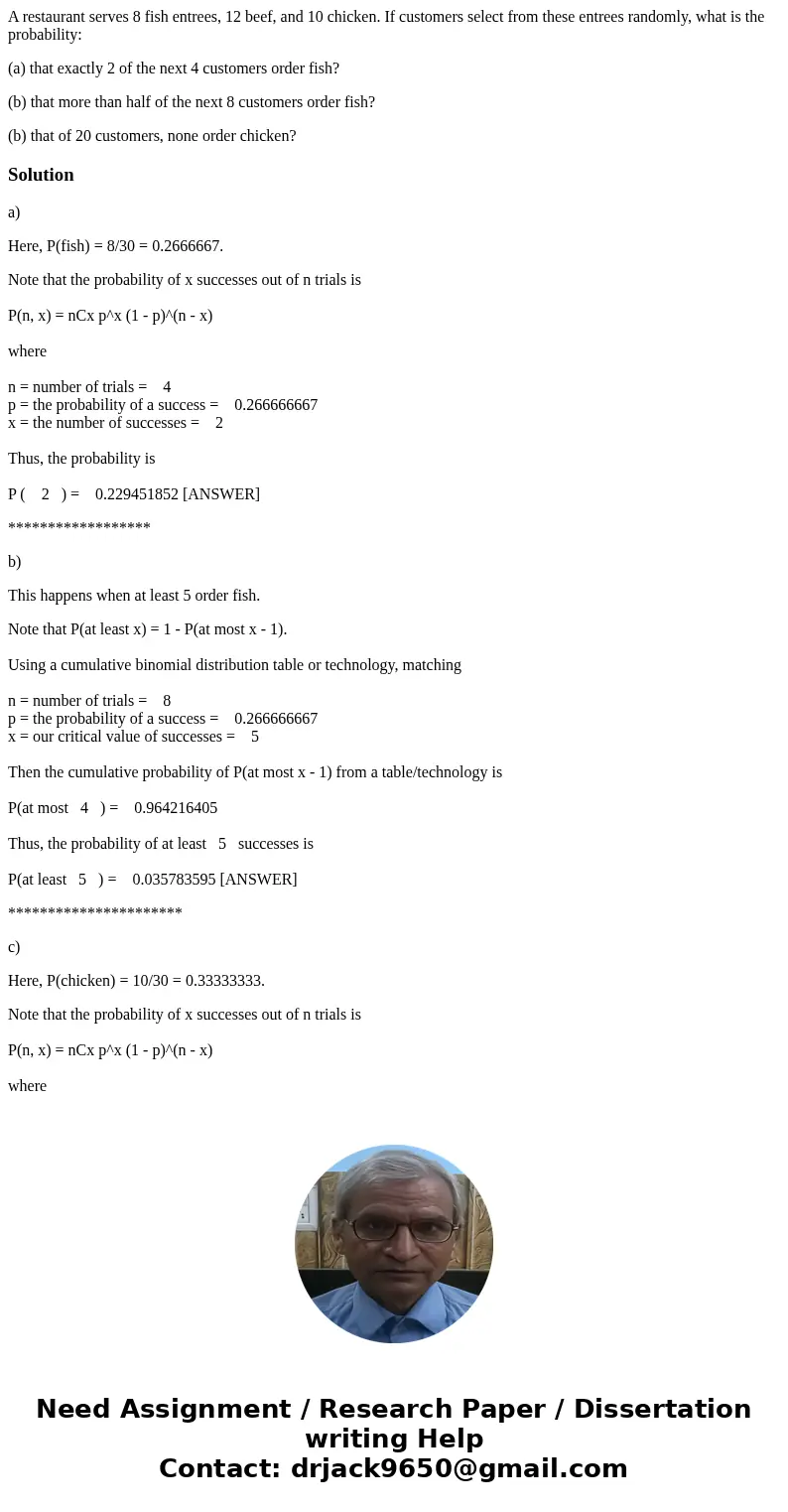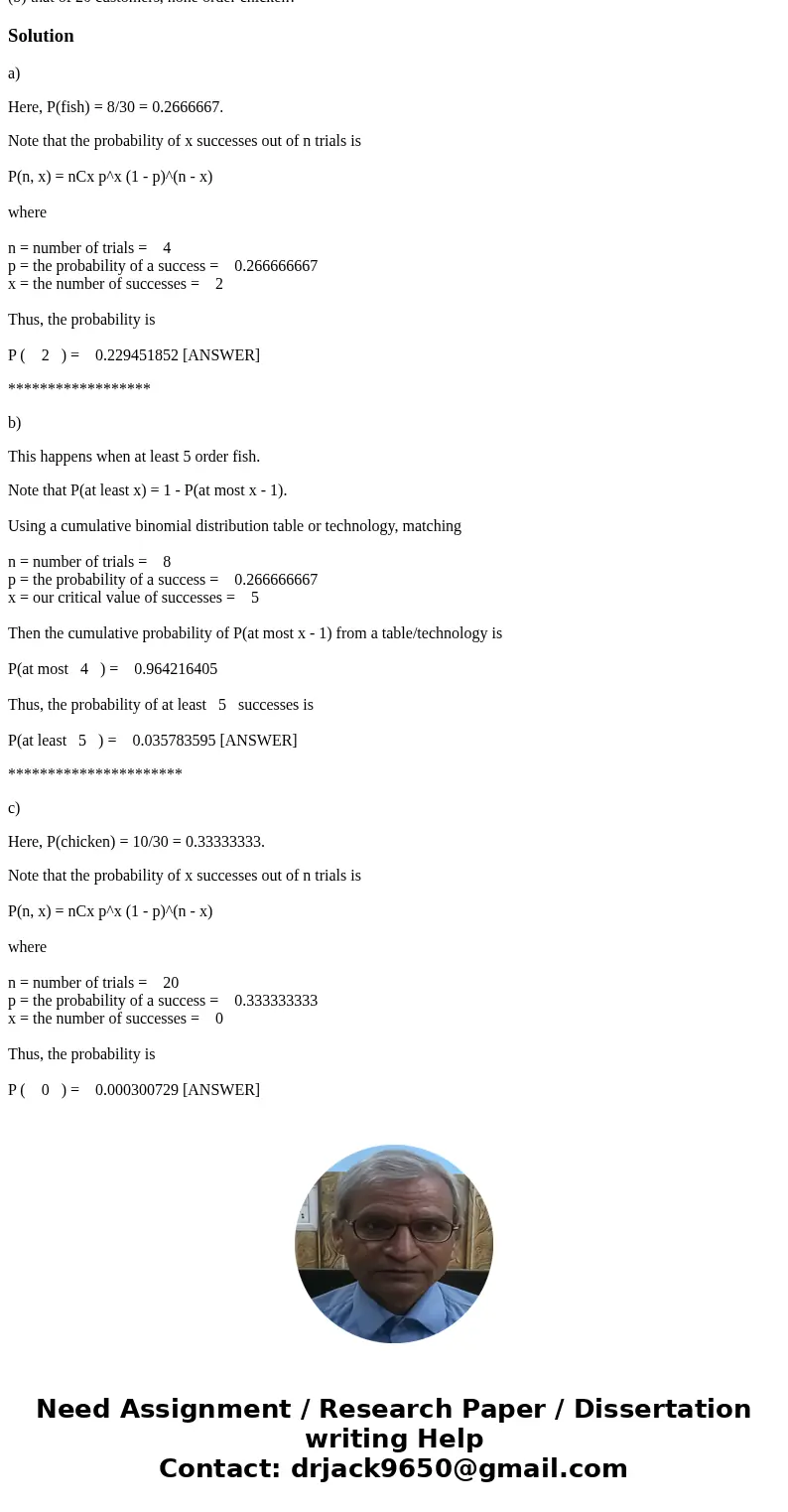A restaurant serves 8 fish entrees 12 beef and 10 chicken If
A restaurant serves 8 fish entrees, 12 beef, and 10 chicken. If customers select from these entrees randomly, what is the probability:
(a) that exactly 2 of the next 4 customers order fish?
(b) that more than half of the next 8 customers order fish?
(b) that of 20 customers, none order chicken?
Solution
a)
Here, P(fish) = 8/30 = 0.2666667.
Note that the probability of x successes out of n trials is
P(n, x) = nCx p^x (1 - p)^(n - x)
where
n = number of trials = 4
p = the probability of a success = 0.266666667
x = the number of successes = 2
Thus, the probability is
P ( 2 ) = 0.229451852 [ANSWER]
******************
b)
This happens when at least 5 order fish.
Note that P(at least x) = 1 - P(at most x - 1).
Using a cumulative binomial distribution table or technology, matching
n = number of trials = 8
p = the probability of a success = 0.266666667
x = our critical value of successes = 5
Then the cumulative probability of P(at most x - 1) from a table/technology is
P(at most 4 ) = 0.964216405
Thus, the probability of at least 5 successes is
P(at least 5 ) = 0.035783595 [ANSWER]
**********************
c)
Here, P(chicken) = 10/30 = 0.33333333.
Note that the probability of x successes out of n trials is
P(n, x) = nCx p^x (1 - p)^(n - x)
where
n = number of trials = 20
p = the probability of a success = 0.333333333
x = the number of successes = 0
Thus, the probability is
P ( 0 ) = 0.000300729 [ANSWER]


 Homework Sourse
Homework Sourse